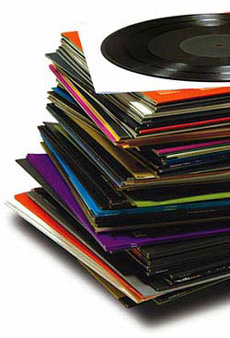archie shepp | montreux one & montreux two

MONTREUX ONE (Arista AL 1027) and MONTREUX TWO (Arista AL 1034)
Archie Shepp / tenor saxophone, soprano saxophone (on TWO only), Charles Majid Greenlee / trombone, Dave Burrell / piano, Cameron Brown / bass, Beaver Harris / drums. Recorded: July 18, 1975 in concert.
“For us, music is functional as well as aesthetic. The artist presumes to judge life, to assess it for all men, to accept it, to reject it.” – Archie Shepp, Notes to Archie Shepp – Bill Dixon Quartet (Savoy)
For Shepp, music was always an essentially political expression, and at its best (say, certain of the pre-Impulse and early Impulse recordings, the pointed version of “Hambone” on The New Wave In Jazz, or the classic extended improvisations of Life At Donaueschingen or Three For A Quarter/One For A Dime) it was political in and of itself; i.e. in its substantive and formal rejection of western aesthetics, in its affirmation of feeling over abstract “intelligence” and in the clear social/spiritual implications of its cultural open-ended ness.
Statements such as these were necessarily more formally ambiguous, and in that lay their (aesthetic/political) strength. Yet for Shepp it was precisely the ambiguity of music, any music, which constituted the problem. (“It was due in large part to the plasticity and ambiguity of notes over words that a folk art became transformed into a national art and later into a universal art. It was now possible for a listener to hear just the music without the ambivalence that words elicit. He could identify with whatever he chose and reject whatever he chose. Thus the Negro (through jazz) has lent America a somewhat uneasy reprieve…” — Shepp, same notes as above.)
And it has no doubt been due to Shepp’s attempt to transcend this bind in which he apparently found himself – that is, feeling the need to express an ideology within an inherently non-ideological art form – that has been responsible for his shifting about of aesthetic stances (and later formal eclecticism) and the general unevenness of his work over the years.
His need to communicate his vision to a wider and wider (black) audience seems, further, to have led him back in the direction of more closed and more familiar forms, but these tend to absorb or, at the very least, substantially re-define even the most far reaching statements contained within them. So, in this respect, Shepp’s present recordings remind a bit of the sense one gets hearing the late Ayler Shandars. His playing is bright, highly “musical,” most of the rough edges gone, yet still largely inventive, but with only a bit of the earlier urgency, and set in contexts which more often than not inhibit rather than extend its implications.
 To say that is to say that this is Shepp’s best playing on record in years (the best of it being on Montreux Two). Yet too often the shape of the music as a whole is fairly lethargic (in concept if not in actual execution), and that’s pretty much the way it sounded to me a few months ago when I heard this group at the Keystone in San Francisco. Regarding my review of that appearance, it’s possible I owe Mr. Shepp something of an apology. He may well have been playing more than I gave him credit for. But mostly I remember the kind of bogged-down feeling one gets midway into “Crucificado” (Montreaux One), and the question must be raised: what is the point of the music, anyway, if the form of it so easily lends itself to negating its content?
To say that is to say that this is Shepp’s best playing on record in years (the best of it being on Montreux Two). Yet too often the shape of the music as a whole is fairly lethargic (in concept if not in actual execution), and that’s pretty much the way it sounded to me a few months ago when I heard this group at the Keystone in San Francisco. Regarding my review of that appearance, it’s possible I owe Mr. Shepp something of an apology. He may well have been playing more than I gave him credit for. But mostly I remember the kind of bogged-down feeling one gets midway into “Crucificado” (Montreaux One), and the question must be raised: what is the point of the music, anyway, if the form of it so easily lends itself to negating its content?
Henry Kuntz, 1976
Addendum – I heard Shepp perform again at Keystone Korner in November 1978 in the company of Siegfried Kessler – piano, Ronnie Boykins – bass, and Clifford Jarvis – drums. Not only was there an unusually close interaction of form and content with this group, but I was impressed with how open even the most traditional of the tunes played (“Stompin’ At The Savoy,” for instance) were made to sound. The credit goes to Shepp’s accompanists and to Shepp himself for allowing them the freedom to plunge headlong with him into the music.
Henry Kuntz, 1982

Archie Shepp web page

Leave a Reply